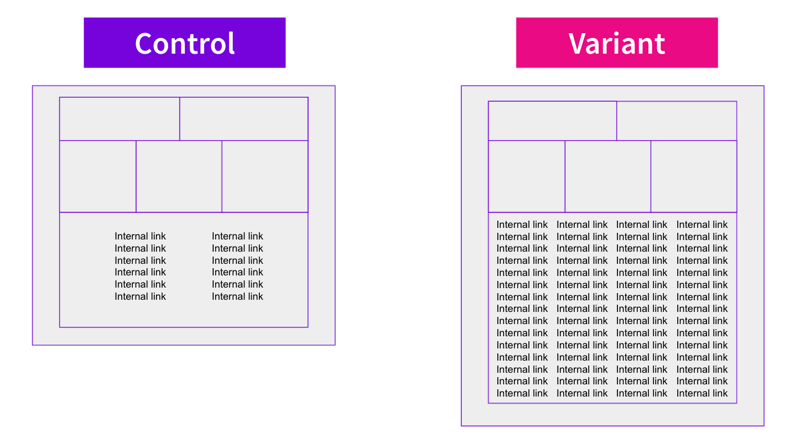Start here: how our SEO split tests work
If you aren't familiar with the fundamentals of how we run controlled SEO experiments that form the basis of all our case studies, then you might find it useful to start by reading the explanation at the end of this article before digesting the details of the case study below. If you'd like to get a new case study by email every two weeks, just enter your email address here.
For this week’s SEO case study, we’re examining a test where we positively impacted organic traffic by introducing more internal links to the home page footer. The #SPQuiz this week asked twitter followers what they thought the positive impact from this test was:
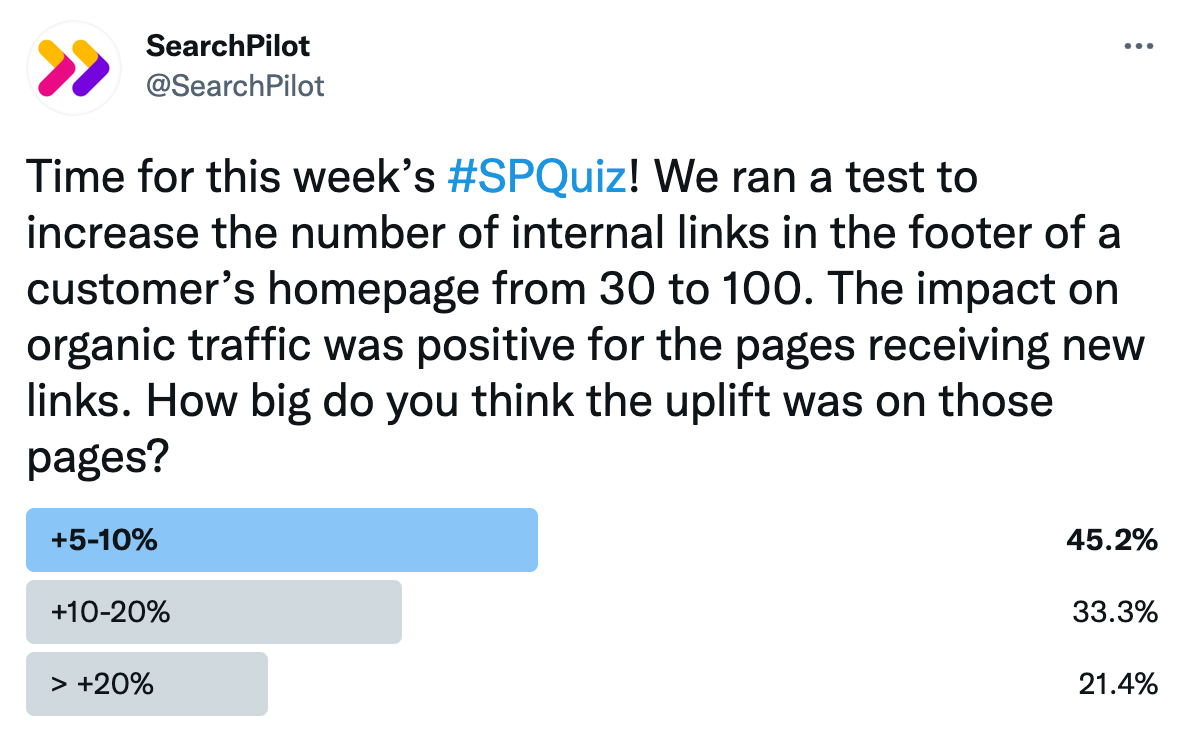
Of the three options, the majority of our votes predicted that the impact was between five and ten percent. This week, the majority was right! However, keep reading and you’ll find that the impact was not distributed equally among devices.
The Case Study
What role does the home page footer of a website play in your SEO strategy? How many internal links should you include? How many is too many? These are questions that are hard to answer with pure theory, so we put them to the test.
We set out to test the hypothesis that adding more links to related pages into the footer of our customer’s site would result in increased organic traffic to the pages being linked to. The addition of these links would increase internal linking, possibly resulting in better distribution of link equity and improved search performance.
It was essential to run this as a test because there was a risk that Google would see the large set of links as excessive and deploying this change could have a negative impact on search traffic. This was not a typical SEO test setup; we added links to the home page footer and measured the impact across the pages that it linked to.
The original footer section contained 30 internal links to categories related to the current page. We incorporated a new version of the footer for variant pages of our test, which contained over 100 internal links. To account for all the extra links, minor CSS changes were made to decrease the font-size of the links. Each version looked something like this:
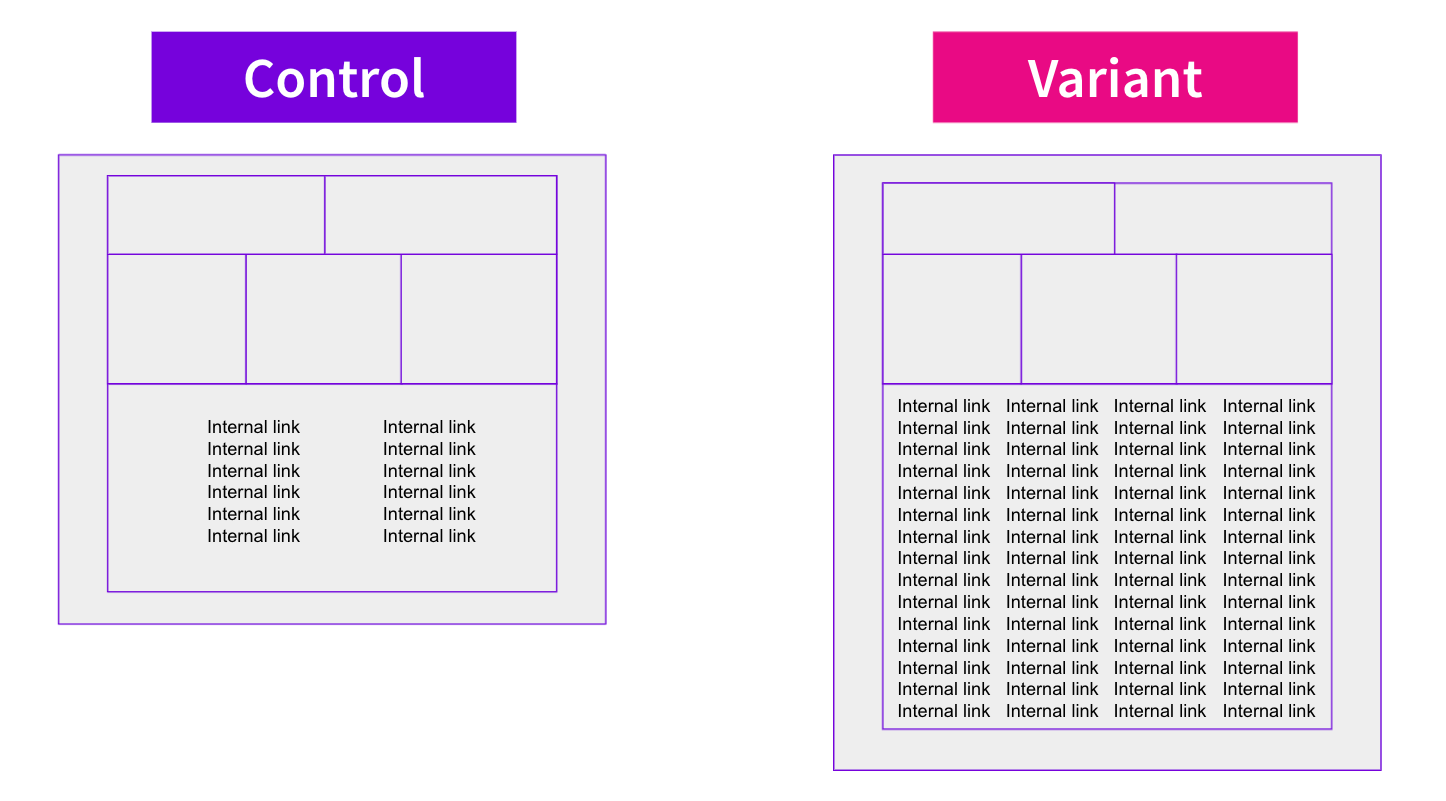
After adding them to the footer, we measured the impact that it had on pages it now was linking to.
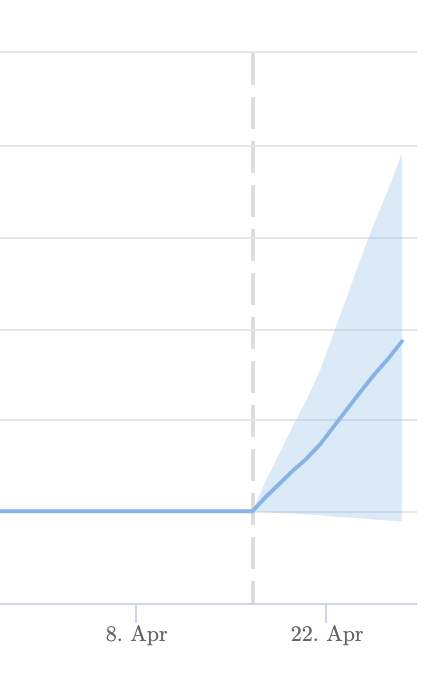
Overall, the result from this test was significantly positive with 5% uplift, but not at the standard 95% confidence interval. Also, segmenting by device reveals that this impact varied.
The desktop version of the website was significantly positive at 95% with 10% uplift.
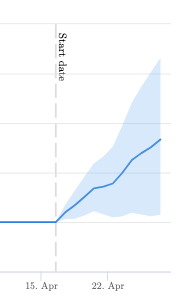
Mobile, on the other hand, was only positive at 90% confidence, yielding a 5% uplift.
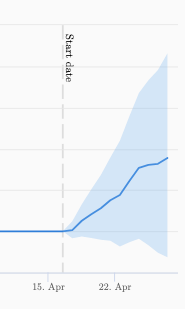
This experiment demonstrates your ability to leverage home page link equity to other sections of your website through the page’s footer.
This is not a call to pack your footer with a bunch of links! While the results of this specific test were positive, the industry of your website and behavior of your visitors will vary and there is definitely a limit – more is not always better.
In this customer’s industry, large footers are standard, so we felt comfortable testing this hypothesis. It’s exciting to see a positive impact from these changes, as the footer proves itself to be an excellent part of your website to run SEO split tests on. We think that there will be some more footer tests to come!
Follow us on Twitter to stay updated.
How our SEO split tests work
The most important thing to know is that our case studies are based on controlled experiments with control and variant pages:
- By detecting changes in performance of the variant pages compared to the control, we know that the measured effect was not caused by seasonality, sitewide changes, Google algorithm updates, competitor changes, or any other external impact.
- The statistical analysis compares the actual outcome to a forecast, and comes with a confidence interval so we know how certain we are the effect is real.
- We measure the impact on organic traffic in order to capture changes to rankings and/or changes to clickthrough rate (more here).
Read more about how SEO A/B testing works or get a demo of the SearchPilot platform.
